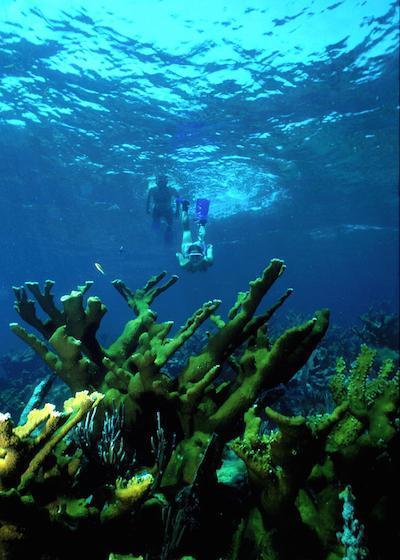
A fisheries management plan adopted for Biscayne National Park's waters will not help the fishery recovery, according to NPCA/NPS file
A plan adopted by the Florida Fish and Wildlife Conservation Commission will not help Biscayne National Park's fisheries recover, according to the National Parks Conservation Association.
Under the plan approved Wednesday the park's waters will continue to suffer from overfishing, NPCA said in a statement.
“Today, the Florida Fish and Wildlife Conservation Commission chose to ignore science and failed to protect Biscayne National Park, our nation’s largest marine national park and a staple of South Florida’s economy, environment and way-of-life. The FWC’s decision not to establish small no-fishing marine reserve areas in Biscayne means that overfishing will continue to devastate vulnerable marine wildlife and the imperiled coral reef ecosystem," said Melissa Abdo, NPCA's Sun Coast regional director.
“We want Floridians and all visitors to Biscayne National Park to enjoy fishing the park’s waters and experiencing the park’s coral reefs and marine wildlife for generations to come. However, without establishing science-based reserves in the park to sustain these resources, that vision of the future will not be possible."
Biscayne's watery underworld has historically featured a wondrous and bountiful array of species, from bonefish, tarpon and oysters to groupers, barracuda, spiny lobster, and lustrous parrotfish. However, of the few hundred species that inhabit the park's waters, 150 have faced population pressures from recreational and commercial fishing, according to the National Park Service.
In 2015, the Park Service presented a general management plan for the park that set aside a no-fishing marine reserve zone to improve the declining reef's condition. The plan called for a no-fishing marine reserve zone covering 10,502 acres (about 6 percent) of the 172,924-acre park's waters. An expanded slow speed zone along the mainland shoreline was intended to improve manatee protection and an idle speed zone (no-wake) at Elliott Key would have enhanced boater and swimmer safety.
But there was opposition from the fishing industry as well as Florida's congressional delegation. The pushback prompted the National Park Service to shelve the marine reserve plan.
NPCA said the fisheries management plan adopted Wednesday was developed jointly by the Florida Fish and Wildlife Commission and the National Park Service. While it is supposed to set regulations that will increase the size and abundance of coral reef fish in Biscayne National Park, the plan does not include creation of no-fishing marine reserve areas, the advocacy group said.

Healthy fisheries and coral reefs at Biscayne National Park need a marine reserve that bans fishing, according to NPCA/NPS
A scientific study (attached below) conducted by NPCA and Dr. Jerald Ault, chair of the Department of Marine Ecosystems and Society at the University of Miami, found that without these crucial reserve areas, the plan will not achieve sustainability for Biscayne National Park fish.
“The FWC plan ignores tried-and-true methods for creating no-fishing marine reserves that have helped protect and restore coral reefs in South Florida, including reefs in Florida Keys National Marine Sanctuary and Dry Tortugas National Park," said Abdo. “The National Park Service has a responsibility to protect the unique resources at Biscayne National Park and should not rubber stamp this weak plan. We urge NPS officials in South Florida to adopt stronger protections than FWC’s and call on Governor Ron DeSantis and fellow elected leaders in Florida to stand up for South Florida’s world-renowned fish, reefs and waters.”



Add comment